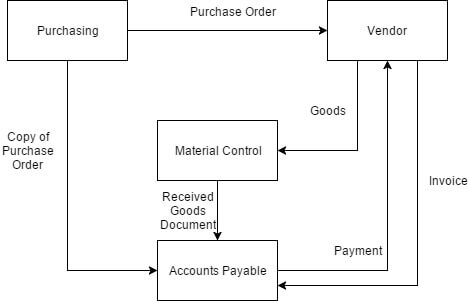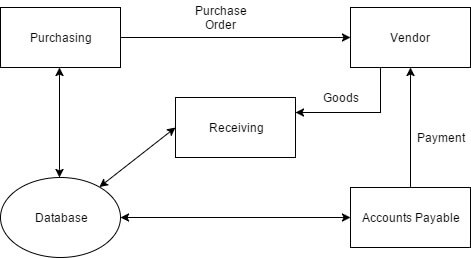“The best companies obsess over operations management. The mediocre ones outsource it.”
– Michael Hammer, Business Process Pioneer
- Operations management transforms how businesses run by optimizing resources, streamlining workflows, and eliminating the chaos of manual processes – typically saving teams 20+ hours weekly per person
- The most successful operations managers master both the technical side (process design, Six Sigma, supply chains) and the human side (change management, team motivation, continuous improvement culture)
- Modern operations has evolved beyond manufacturing – it’s now about orchestrating technology, people, and processes across every department to create competitive advantage
- Curious how mid-size companies are actually implementing these concepts without enterprise complexity? Maybe it’s worth exploring how simpler workflow automation works for teams that need results, not theory
- What is operations management, exactly?
- What does an operations manager do?
- The 4 Vs framework that defines your operations
- Skills you need to succeed in operations
- Why Operations management is important
- How to put operations management into practice with 4 of the most popular methodologies
What is operations management – a simple introduction
Operations management is basically people management. Most business departments focus on very specific goals – marketing means getting more sales for your business, HR keeps your employees happy, and so on. Operations management, on the other hand, involves getting the most out of your company resources. These can involve your employees (doing more work that creates value), technology (maximum efficiency in manufacturing, for example), equipment (help employees do more work), and so on. As you’ve probably figured, operations management involves dealing with a lot of different areas. Hence, it’s important for your COO (chief operations officer) to have a background in all sorts of disciplines, from manufacturing to people-management. Actually, here’s something most articles won’t tell you: operations management emerged from early 20th-century manufacturing practices and became increasingly important after World War II. Military logistics research highlighted the power of process optimization – and businesses took notice. Fast forward to today, and it’s evolved into something far more comprehensive than just factory floor management.What does an operations manager do
Depending on the organization, an operations manager can be responsible for a lot of different things. Unlike other executive positions, operations management is cross-department. A CMO specifically works with the marketing department, CFO with finance, and so on. A COO, on the other hand, might need to work with just about every department (if there’s need for it). In most cases, their work involves…- Process Design – Figuring out the exact steps needed to be carried out so that the organization meets its business goals. This can mean helping plan out a one-time project or creating procedures for repeatable work. A real-life example of operations in projects would be, for example, creating a timeline for developing some software for the client. For a process example, the COO could create a structured employee onboarding procedure to make the whole onboarding more efficient. Learn how to create your first operational template here.
- Standard Management – Helping create and optimize budgets, scheduling equipment maintenance, ensuring that the employees are following standard procedures, etc. Document your operations properly with the right tools.
- Process Improvement and Optimization – Most businesses have a “don’t fix what’s not broken” policy towards their processes. More often than not, though, you could potentially get a lot more from your business if you constantly check on your processes. The COO is supposed to make sure that all your processes are as efficient as they can be. Discover systematic approaches to process improvement.
The 4 Vs of operations – understanding your operational reality
Every operation is different. McDonald’s and a boutique consulting firm both have operations, but they couldn’t be more different. That’s where the 4 Vs framework comes in – it’s how you understand what makes your operations unique.Volume
How much do you produce? High volume operations (think Amazon warehouses) focus on standardization and efficiency. Low volume operations (custom software development) focus on flexibility and expertise. The thing is, most mid-size companies fall somewhere in between. You’re not cranking out millions of widgets, but you’re also not doing everything custom. This middle ground is actually where smart automation makes the biggest difference – standardizing what you can while keeping flexibility where you need it.Variety
How many different products or services do you offer? High variety means complexity. Each variation needs different processes, skills, maybe even equipment. Here’s the catch: variety kills efficiency if you’re not careful. The solution? Template-based operations. Create standard frameworks that can flex for different needs without starting from scratch each time. Manage variety with flexible workflows.Variation in demand
Does your workload look like a roller coaster or a flat line? Most businesses deal with peaks and valleys – tax season for accountants, holidays for retail, Monday mornings for IT help desks. Smart operations managers build capacity for peaks without wasting resources in valleys. This might mean cross-training staff, using flexible scheduling, or automating routine tasks so humans can handle the complex stuff when things get busy. Learn more about scaling operations with consistent processes.Visibility
How much can customers see of your operations? In a restaurant, they see everything. In a data center, they see nothing. Higher visibility means higher pressure to get things right every time. But here’s the opportunity: making your operations more visible internally (even if customers can’t see them) drives accountability and improvement. When everyone can see the workflow status, bottlenecks become obvious. Problems get fixed faster.Essential skills every operations manager needs (the real list)
Forget the generic “leadership and communication” stuff every article mentions. Here’s what actually matters in the trenches:Technical skills that pay the bills
- Data analysis – Not just Excel. You need to spot patterns in chaos, turn metrics into stories that get executives to act. If you can’t prove ROI with numbers, your improvements die in committee. Calculate your operational ROI here.
- Process mapping – But here’s the twist: skip the complex flowcharts that nobody reads. Simple, visual workflows that everyone understands beat perfect BPMN diagrams every time.
- Systems thinking – Everything connects. Speeding up one process might break three others. Great ops managers see the whole puzzle, not just individual pieces.
- Financial fluency – You’re not the CFO, but you better speak their language. Every process improvement needs a business case.
The human skills nobody talks about
- Change psychology – People hate change. Even good change. The ability to make improvement feel like their idea? That’s gold.
- Political navigation – Operations touches every department. You’re going to step on toes. Knowing whose toes can be stepped on (and whose can’t) determines your survival.
- Simplification instinct – The urge to add complexity is strong. Great ops managers constantly ask: “How can we make this simpler?”
- Patience of a saint – Real improvement takes months, sometimes years. Quick wins keep you employed while you work on the big stuff. Master continuous improvement methodologies.
Modern operations skills for the digital age
- Automation judgment – Knowing what to automate and what to keep human. Hint: it’s not about the technology, it’s about the value. Explore intelligent automation options.
- Remote operations management – Managing processes when your team is distributed across time zones. Integration with collaboration tools becomes critical.
- Continuous improvement facilitation – Building systems that improve themselves through feedback loops and team input. Creating this culture is the real challenge.
Why operations management is important
In smaller companies, operations are very simple and straightforward. Everyone takes part in managing the processes, and more or less, things go smoothly. The same, however, doesn’t apply to companies with 20+ employees. That’s when things start getting complicated. You can’t just rely on your employees to do work right – you need to have standardized procedures to ensure that everything as efficient as possible. Actually, let me be more specific about what happens without good operations management:- The knowledge cliff – When Sarah from accounting leaves, nobody knows how month-end closing actually works. Three months of chaos while someone figures it out. This tribal knowledge problem costs companies millions.
- The efficiency leak – Death by a thousand paper cuts. Each inefficiency seems small – an extra approval here, a redundant data entry there. Add them up? You’re hemorrhaging 30% of your capacity.
- The quality lottery – Different people, different quality. Customer experience depends on who handles their case. Not exactly a recipe for five-star reviews.
How to manage your operations [4 popular theories]
Sadly, there’s no step-by-step guide to operations management. Unlike most fields, it involves knowing a lot of different things, from finance to HR. Knowing your way around process management, though, will make operations significantly easier. While there are a lot of different approaches there, the following 4 are the most popular.Business process management (BPM)
BPM is something every operations manager should have a good hang of. Chances are, you’ve heard the term before – and no, it’s not just another buzzword. Business process management is the methodology of constantly analyzing, improving and automating processes. It’s not something you do just once, though – you need to be on a constant lookout for potential improvements. Putting that into practice, you should have a general idea of what the BPM lifecycle consists of. i.e, the exact steps you need to take to work on any given process. The steps are…- Design – Every company has processes. Not all of them, however, are really outlined. More often than not, they’re implicit. The “design” part means identifying a process and figuring out where it starts, what it consists of, and where it ends. To learn more about business process design, check out our guide.
- Modeling – Once you’ve identified a process, you need to put it down on paper. Without something to look at, the analysis part can be quite hard. Usually, you’d go for a workflow diagram if the process is simple, or one of the many business process mapping techniques, if it’s not. To learn more about business process modeling, check out our guide.
- Analysis – Now that you have a workflow diagram ready, you can start analyzing it. Are there any steps within the process that don’t really add value? Are there any ways to remove them? Are there any steps you could just automate using software? To learn more about business process analysis, check out our guide.
- Monitoring – You can’t improve a process without knowing how well it’s performing as-is. Plus, you should also be able to figure out whether the changes you’re making have a positive impact or not. So, gather the benchmark data for the process as-is and compare it to the data you get post-improvements. Learn how to use analytics for process insights.
- Improving or Automating – Use the insights you’ve identified in the “analysis” step to make changes to the process. You can either improve it by working with the process steps or automate certain steps using software or hardware. To learn more about business process improvement or automation, check out our guides. See how process improvement software can accelerate your efforts.
Business process reengineering
Sometimes, improving processes isn’t the most efficient thing you can do. Instead, you want to re-engineer it (not just a business buzzword, we promise!). Meaning, instead of improving a process, you re-create it from scratch. In most cases, this is done with the help of technology. After all, you can’t really change something fundamentally just like that. To give you a better idea of how this works, we’ll look into an example of how Ford completely re-engineered their accounts payable department. The major problem was that the department was significantly overstaffed. They employed 500 people, as opposed to 5 in the same department at Mazda (a partner company). Ford launched a BPR initiative to figure out why they were underperforming. The old process worked as follows…- The purchasing department receives a purchase order. The copy is forwarded to the accounts payable
- Material control receives the goods & send a copy of the delivery document to accounts payable
- The vendor sends a receipt to accounts payable
- The accounts payable matches the three separate documents, and only then is the payment issued


Six Sigma and lean thinking
The two methodologies we’ve mentioned until now dealt with business processes. Six Sigma, on the other hand, traditionally focused on manufacturing processes. The main idea behind it is minimizing defect rates – for every million opportunities, you shouldn’t have more than 3.4 inefficiencies. But here’s the evolution: Six Sigma isn’t just for factories anymore. Service companies use it to reduce errors in everything from hospital procedures to software deployments. You can measure any process with sigma levels. While there are a lot of Six Sigma tools out there, DMAIC is one of the most popular ones. The methodology helps perfect your processes & consists of 5 steps…- Define – Outline what the issue with any given process is. Decide on the improvement goal & which tools or resources you’re going to use. Get a practical introduction to DMAIC here.
- Measure – Look at the process as-is and measure its performance. Once you know what the metrics are, you’ll have a better idea on how to improve them.
- Analysis – Find the root cause of the issue. Why is the process underperforming? Learn simple root cause analysis techniques.
- Improvement – Once you’ve identified the problem, try finding potential solutions.
- Control – Implement the new process on a small scale and benchmark the new results to the old.
Supply chain management
Another major aspect of modern operations management is supply chain management. As organizations have become more complex and much more international in their scope, the strategic process by which materials, goods and information flow between suppliers, businesses and consumers has become an industry in itself. Keeping the supply chain healthy and moving is in the interests of everyone involved, but there are many factors that can slow things down. Modern supply chain challenges nobody predicted:- The visibility problem – You can track a pizza delivery better than a $100,000 shipment. Companies are finally fixing this with real-time tracking, but most are still flying blind.
- The resilience test – Remember when one ship blocked the Suez Canal and broke global trade? Your supply chain needs Plan B, C, and D.
- The sustainability pressure – Customers want to know where stuff comes from and how it’s made. Carbon footprints matter now. ESG isn’t just for annual reports anymore.
Modern operations management trends (what’s actually changing)
Let’s talk about what’s really happening in operations right now – not the consultant slideware, but the actual changes:The automation reality check
Everyone’s talking about AI and automation. Here’s what’s actually working:- Smart routing – Tasks automatically go to the right person based on workload and expertise. No more manual assignment.
- Predictive maintenance – Equipment tells you it’s going to break before it does. Works for servers, HVAC, even coffee machines.
- Intelligent document processing – Invoices, contracts, forms – they read themselves now. Humans just handle exceptions.
The sustainability shift
Operations managers are now chief sustainability officers by default. You’re measuring:- Carbon per unit produced
- Waste reduction percentages
- Energy efficiency improvements
- Circular economy contributions
The flexibility imperative
Remember when operations meant standardization? Now it’s about managed flexibility:- Processes that adapt to context
- Teams that reconfigure for different projects
- Systems that scale up and down with demand
- Workflows that work across office, home, and everywhere in between
Using software to super-charge operations management
As we’ve already discussed, one of the biggest aspects of operations management is process improvement. If you’re doing this manually, it can be a bit rough…- Your employees won’t always follow the best practice with the process
- You’ll need to map business processes & store them manually
- You’ll have to keep continuously track process metrics
- Users are now deciding to buy software themselves . Old BPM was bought by your IT department, who didn’t generally care about user experience – as long as it was made by a large/boring company.
- Cloud tools are now free to try by anyone, anytime . With Old BPM you had to call sales and wait for 50 questions just to look at it and finally decide it sucks.
- People want to share workflows with clients. With Old BPM you were stuck with trying to automate internal processes only. Your clients would be very scared and run a mile from it.
- People expect to integrate cloud tools without IT . With Old BPM you had get engineers to write code to make a simple integration. That’s now become a drag-and-drop service.
- People expect to work on phones. This means giant, clunky flowcharts in Old BPM are dead – because they don’t fit on your phone’s screen – and only define “the perfect process”.
- People are tired of flowcharts. Old BPM was all about the high priest telling you how a process can/will be done, and you would obey. Now – modern workers and teams are paid to collaborate.
- People expect all the benefits of the cloud. Old BPM was never cloud-born and was never designed for the cloud. And that creates a massive bunch of missed opportunities.
- Companies of all sizes need process management – and never had it . Since Old BPM was so expensive and complicated, only large companies could afford it. The rest of us were left out.
- People are excited about AI – but confused about where to begin. With Old BPM you have zero chance of using AI without an army of engineers. With cloud-born systems like Tallyfy – it’s childs’ play to use any AI you like to run amazing automations for photos, voice, video and more.
- Enterprise-level implementations that take 18 months
- Consultants who’ve never actually run operations
- Flowcharts that look like subway maps
- Training sessions that everyone forgets
- Setup in hours, not months
- Workflows everyone understands
- Changes without calling IT
- Actual adoption by actual humans

